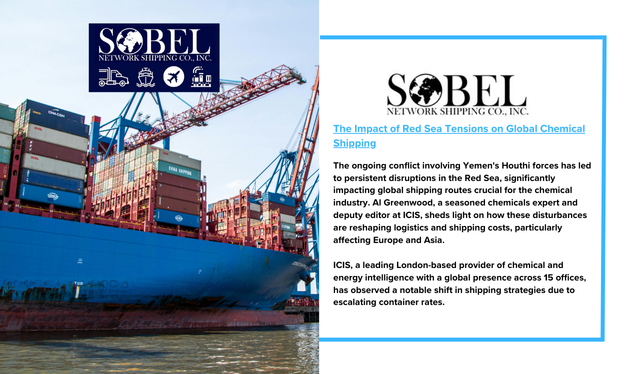The ongoing conflict involving Yemen’s Houthi forces has led to persistent disruptions in the Red Sea, significantly impacting global shipping routes crucial for the chemical industry. Al Greenwood, a seasoned chemicals expert and deputy editor at ICIS, sheds light on how these disturbances are reshaping logistics and shipping costs, particularly affecting Europe and Asia.
ICIS, a leading London-based provider of chemical and energy intelligence with a global presence across 15 offices, has observed a notable shift in shipping strategies due to escalating container rates.
The chemical industry relies heavily on containers to transport critical materials like polyethylene and polypropylene. These plastics, used in a vast array of products from everyday household items to specialized medical devices, are typically shipped in pellet form, packed in bags, or liquid form in ISO tanks.
The traditional route through the Red Sea, which accommodates about 15% of the world’s ocean carrier traffic according to the International Monetary Fund, is being bypassed. Now, vessels are navigating around the Cape of Good Hope at the southern tip of Africa, adding significant travel time—up to a month more than the usual Red Sea/Suez Canal route.
Current freight rates reflect this upheaval. For instance, the price for a 40-foot container from Asia to North Europe has skyrocketed to $8,764.14, as per the Freightos Baltic Daily Index. This index tracks the price movements of containers across 12 major maritime lanes, highlighting the widespread impact of the conflict.
Despite the United States being less exposed to these disruptions due to its reliance on the Panama Canal, the effects of the conflict ripple globally. “The U.S. exports substantial amounts of polyethylene and polyvinyl chloride, which are also affected by the higher freight rates,” Greenwood notes. U.S. shippers are facing these increased costs head-on, which in turn affects the overall pricing of goods and supply chain efficiency.
This situation in the Red Sea illustrates how geopolitical tensions can extend beyond immediate regions, influencing global trade dynamics and the operational strategies of industries worldwide. As the conflict continues, its repercussions on the global chemical shipping industry and beyond are expected to persist, highlighting the interconnected nature of global markets and the vulnerability of global supply chains to geopolitical risks.


